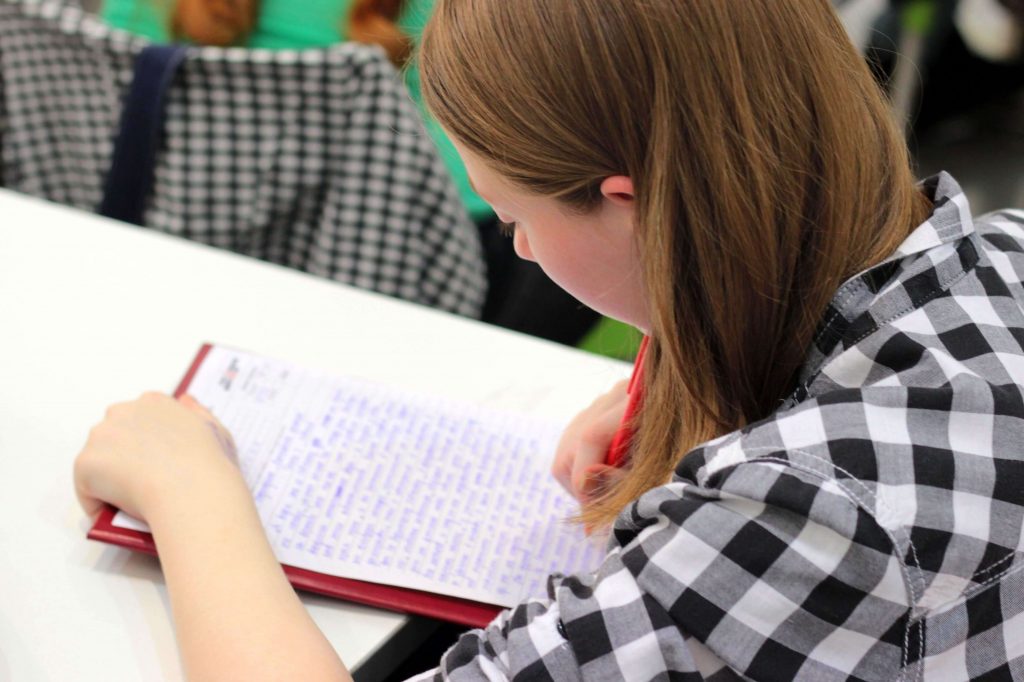It’s really important to visit a school in order to get a feel for it. You might have heard rumours about what a school is like or read its Ofsted report, but nothing is as important as visiting. When a teacher applies for a job at a school, if they don’t visit before applying or prior to being interviewed they are pretty unlikely to get the job; that’s because it’s taken as fact by those working in education that unless you go and take a look around, chat to the staff and watch the children at work, you really don’t know the school at all.
· A good school will be happy for you to visit but you do need to phone and arrange a suitable time.
· Go during school hours so you can see the children working and playing. Note how they’re working in teams and how enthused they appear by their work.
· Look at displays. Do they look newly done or like they’ve been up for years? I would look for displays that celebrate excellent work and displays that are interactive. Interactive displays are designed to be changed on a daily or weekly basis. They might be showing what is being worked on in class that week and invite children to come and have a go at something, for example: Can you put these numbers in order? Interactive displays are generally regarded as good practice as they demonstrate using the environment as a teaching tool.
· Ask about parent helpers. You might not have the time to help out, but ask anyway! Good schools should welcome parent helpers, both wanting the help and wanting to involve the larger community in school life.
· Find out about extra-curricular clubs – there’s an enormous variety between schools when it comes to how much after-school / lunch-time provision they have. From singing and musical instruments, to board games and sports these extra-curricular activities can make an enormous difference to a child’s school experience and also can indicate level of commitment and enthusiasm from teachers.
What to look for when browsing school’s website
I think that you can tell a fair bit about a school these days from their homepage (it is, after all, what they want people to know about their school first). There you will probably find a statement about their ethos – read it. Is it what you think of as most important? School philosophies can vary enormously!
On the site you might also find newsletters archived. Have a read through – just from the tone you can get a feel for the school. Some newsletters are just a list of parent tellings-off whilst others are bursting with celebration of school sports and achievement. You might also find other information on the school website, such as a calendar of up and coming trips and visitors coming into school. For me, the busier the better – we want our children to be enthusiastic about their learning so the teachers need to be, too.
On the site you might also find newsletters archived. Have a read through – just from the tone you can get a feel for the school. Some newsletters are just a list of parent tellings-off whilst others are bursting with celebration of school sports and achievement. You might also find other information on the school website, such as a calendar of up and coming trips and visitors coming into school. For me, the busier the better – we want our children to be enthusiastic about their learning so the teachers need to be, too.
How to read ofsted report
You can’t tell everything from an Ofsted report by any stretch of the imagination, but they are nonetheless a useful tool.
Number on roll
This tells you how many children are at the school. This is a really personal issue; some parents dream of sending their children to a teeny village school, whereas others get the shivers at the very idea! Never assume that if it is a village school with, say, 70 on roll, that your child will be in a small class. This isn’t always the case as schools will mix year groups together, so the actual class sizes could still be around the 30 mark.
This tells you how many children are at the school. This is a really personal issue; some parents dream of sending their children to a teeny village school, whereas others get the shivers at the very idea! Never assume that if it is a village school with, say, 70 on roll, that your child will be in a small class. This isn’t always the case as schools will mix year groups together, so the actual class sizes could still be around the 30 mark.
Description of the school
I would hazard a guess this is the section many parents go to first and analyse at length! Here you can read about the socio-economic and cultural mix at the school. How many children are entitled to free school meals is considered an indication of level of social deprivation. Personally I’m looking for a good mix here. Don’t get hung up on how many children have English as an Additional Language; many schools have extra support to help manage language issues. If your child goes to a school filled with languages and cultures to learn from they can only benefit. There may be something here on whether children are taught in mixed-aged classes. Don’t let this put you off – all classes have huge differentiation and children can learn very successfully in mixed-aged groups.
I would hazard a guess this is the section many parents go to first and analyse at length! Here you can read about the socio-economic and cultural mix at the school. How many children are entitled to free school meals is considered an indication of level of social deprivation. Personally I’m looking for a good mix here. Don’t get hung up on how many children have English as an Additional Language; many schools have extra support to help manage language issues. If your child goes to a school filled with languages and cultures to learn from they can only benefit. There may be something here on whether children are taught in mixed-aged classes. Don’t let this put you off – all classes have huge differentiation and children can learn very successfully in mixed-aged groups.
Inspection judgements
When inspected the school is given an overall rating (Outstanding, Good, Satisfactory or Inadequate). Then you can see the judgment broken down into:
Achievement
Quality of Teaching
Behaviour and safety
Leadership
When inspected the school is given an overall rating (Outstanding, Good, Satisfactory or Inadequate). Then you can see the judgment broken down into:
Achievement
Quality of Teaching
Behaviour and safety
Leadership
It’s really a personal issue as to which you find most important. You might feel that you could forgive, for instance, a Satisfactory in Achievement if Behaviour is Outstanding.
What the school needs to do to improve
Reading this gives you an insight into the school’s shortcomings and you’ll need to decide what is too important to ignore. That said, the fact that issues are highlighted means that schools are having to work hard to improve these areas as Ofsted will be looking for improvements before their next inspection.
Reading this gives you an insight into the school’s shortcomings and you’ll need to decide what is too important to ignore. That said, the fact that issues are highlighted means that schools are having to work hard to improve these areas as Ofsted will be looking for improvements before their next inspection.






About The Author: First Class
More posts by First Class